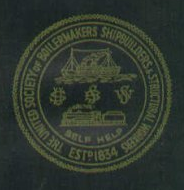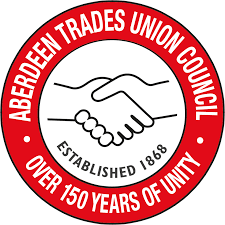Related Research Articles

The Scottish Trades Union Congress (STUC) is the national trade union centre in Scotland. With 40 affiliated unions as of 2020, the STUC represents over 540,000 trade unionists.
In British politics, an affiliated trade union is one that is linked to the Labour Party. The party was created by the trade unions and socialist societies in 1900 as the Labour Representation Committee and the unions have retained close institutional links with it.

The Ceramic and Allied Trades Union (CATU) was a trade union representing pottery workers in the United Kingdom.

The Modern Records Centre (MRC) is the specialist archive service of the University of Warwick in Coventry, England, located adjacent to the Central Campus Library. It was established in October 1973 and holds the world's largest archive collection on British industrial relations, as well as archives relating to many other aspects of British social, political and economic history.
The Altogether Builders' Labourers and Constructional Workers' Society was a trade union representing labourers in the construction industry in the United Kingdom.
The National Association of Operative Plasterers (NAOP) was a trade union representing plasterers in the United Kingdom.

James Duncan was a Scottish American union leader, and president of the Granite Cutters' International Association from 1885 until his death in 1928. He was an influential member of the American labor movement, helping to co-found the American Federation of Labor.

The Amalgamated Society of Boilermakers, Shipwrights, Blacksmiths and Structural Workers (ASB) was a trade union in the United Kingdom. Many of its members worked in shipbuilding, in which industry it was the leading trade union, while over time it also developed strength in engineering and construction.

The Amalgamated Union of Building Trade Workers (AUBTW) was a British trade union.
The London builders' strike of 1859 was a strike and resulting lock out of building trade workers across London. The action did not result in any changes to working conditions, but it led to the formation of new, national trade unions in the United Kingdom.

The Plumbing Trades Union (PTU) was a trade union representing plumbers in Britain and Ireland.
The National Federation of Building Trades Operatives (NFBTO) was a trade union federation in the United Kingdom, consisting of unions with members in construction and related industries.
The Operative Society of Masons, Quarrymen and Allied Trades of England and Wales was a trade union representing stonemasons and related workers in the United Kingdom.
The United Builders' Labourers Union was a trade union representing labourers in the construction industry in the United Kingdom.
The Operative Builders' Union was an early trade union federation representing construction and maintenance workers in the United Kingdom.
The Scottish Operative Tailors' and Tailoresses' Association was a trade union representing clothing workers in Scotland.
The Building and Monumental Workers' Association of Scotland was a trade union representing stonemasons in Scotland. While never a large union, it brought together all the unionised stonemasons in the country.

Aberdeen Trades Union Council (ATUC) is the body made up of affiliated trade union branches and organisations working in the Aberdeen and Aberdeenshire area to promote the interests of workers in the region. The ATUC provides services to affiliated branches on a wide range of industrial, social and community issues and is affiliated to the STUC. It has an office based in Aberdeen, Scotland.
Richard Harnott was a British trade union leader.

The Scottish National Operative Plasterers' Union was a trade union representing plasterers in Scotland.
References
- 1 2 3 4 5 Marsh, Arthur; Ryan, Victoria (1987). Historical Directory of Trade Unions. 3. Aldershot: Gower Publishing Company. p. 7–14. ISBN 0566021625.
- ↑ "Building and Monumental Workers' Association of Scotland". Archives Hub. Jisc. Retrieved 31 May 2018.
- 1 2 3 4 5 6 7 8 9 10 11 Postgate, Raymond (1923). The Builders' History. London: National Federation of Building Trade Operatives. p. 462.